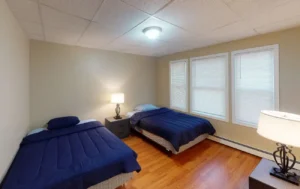What Is Sober Living and How Does It Support Recovery?

A sober living house is a peer-managed home designed to help people maintain sobriety. This is achieved through required sobriety, recovery group attendance, and household participation. Those who live in these houses rent rooms indefinitely and live a life in accordance with their responsibilities, like work and school. From detox and inpatient care to outpatient and sober living programs, we provide what you need at every stage of recovery.
Level One
One study into Oxford House recovery homes found that they reduce relapse by providing closer monitoring and referring additional services to residents with a history of severe addiction. Sober living houses also date back to the 1800s when religious organizations set up residencies where people were required to abstain from alcohol. More modern versions were opened in the 1940s and focused on supporting rehabilitation from substance abuse. These facilities are generally more pleasant and less crowded than halfway houses. Sober living houses are also called sober residences, recovery houses, and recovery residences, among other names. Halfway houses, on the other hand, are typically more structured and may be mandated as part of a court-ordered treatment program.
How Much Do Sober Living Homes Cost?
- Since sober living typically follows addiction treatment, getting a referral from the treatment provider is recommended.
- Understanding the benefits and structure of sober living homes can be a key factor in determining if this type of environment is suitable for your journey to long-term sobriety.
- They are designed to be a transitional space from residential treatment to mainstream society.
- Other referral sources may include the criminal justice system, a mental health professional, Twelve Step meeting participants, or friends and family.
- At admission, nearly all residents are eligible for some type of government assistance (e.g., general assistance or social security disability) and use those funds to pay SLH fees.
Many of those in the early phase of recovery find it challenging to move from the structured environment of residential rehab directly into independent living. At a sober living home, you can benefit from a house manager who will oversee operations, and you can count on other residents for help as you move toward independent sober living at home. Living in a sober home will be similar to living in rehab, but here, you will continue to work or go to school and have financial independence. You’ll still attend group meetings and have a support system, but you can come and go out of the home whenever you’d like.

California
Most sober living homes do not offer formal addiction treatment but utilize programs in the broader community. Some sober houses provide forms of peer-led counseling or promotion of 12-step programs as https://ecosoberhouse.com/article/the-hidden-effects-of-binge-drinkin/ favored by organizations such as Alcoholics Anonymous. Many people recovering from drug addiction or alcoholism reassess their closest relationships and friendships, often finding that many relationships were grounded on substance abuse. By continuing your recovery process at a sober living home, you’ll surround yourself with peers committed to sobriety and embracing sober living.

- The staff understands that healing involves nurturing the mind, body, and spirit.
- Sober-living homes provide a strong support network and community to help you safely navigate the tough spots and triggers you may encounter.
- Studies have identified that 65% to 70% of people relapse within the initial 90-day period.
- Proven effective in reducing the chance of relapse, sober homes are a collaborative and supportive environment to transition back to everyday life.
Sober living homes vary widely in terms of structure, rules, and the level of support provided. Some may offer more freedom, while others are more structured, closely resembling the environment of a rehabilitation facility. When considering a sober living home, it’s important to find one that aligns with your recovery goals and personal needs. Think of sober what is a sober living house living as your support net as you practice new skills, gain new insight and shape your new life in recovery with other people who are possibly facing the same challenges. Sober-living homes provide a strong support network and community to help you safely navigate the tough spots and triggers you may encounter. Sober living homes are generally less expensive than inpatient treatment centers.


This sense of community encourages mutual support, where residents motivate and inspire each other to stay committed to their recovery goals. A house manager or supervisor oversees the daily operations and ensures compliance with house rules. Their presence is crucial for maintaining order and providing guidance when residents face challenges.
Assessing the Impact of the Community Context
Residents are often required to seek employment, further their education, or engage in volunteer work. This aspect of sober living ensures that you not only work on staying sober but also on rebuilding your life and securing a stable future. Sober living homes are places where someone in recovery can find independence while learning to seek and obtain community resources necessary for long-term recovery. Halfway houses, like other recovery and sober-living houses, are intended to gently reintroduce tenants back into society, free from the pressures and triggers of a potentially dangerous home environment. Finally, a transitional housing center with a sobriety requirement could be of great help if you’re struggling with housing insecurity, mainly due to addiction struggles. Due to how interchangeably these terms are used, it is important to ask questions about expectations and structure to determine which home is the right fit for you.


